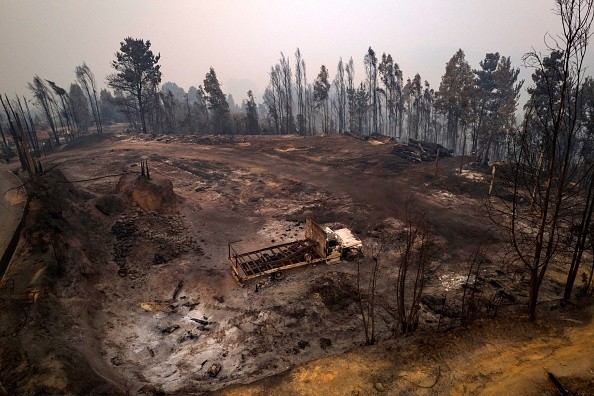A devastating and widespread wildfire hit Chile this weekend, resulting in about 900 injuries, 23 casualties and 1000 people evacuated.
Wildfires have become common in the country, burning forests and displacing nearby communities.
Chile's low humidity and dry weather resulted in sudden wildlife.
The situation worsened due to wind gusts.
According to NASA, February unleashed extreme weather events in Chile.
The report explained that the extreme changes in 2019 helped bring challenging heat to the country.
Dangerous wildfire in Chile

NASA added that Chile recorded scorching temperatures that impacted communities.
In the southern parts, residents suffered from record-breaking temperatures that promoted the government to declare disaster areas.
The impact of wildfires would affect the biodiversity of the ecosystems of animals living in the forests.
According to AccuWeather's latest report this February 6, a significant wildfire emerged in Chile.
The deadly wildfire is named Biobío wildfire.
The local reports and Rado Agricultura said that the devastating wildfire reached Chile's southern and central parts.
- The wildfire affected regions of La Araucanía and Ñuble.
- The report said that there were 23 casualties (As of Saturday).
- About 979 people were reported injured.
- More than 1,000 people were evacuated and sheltered.
- Reuters reported that the wildfires ravaged about 270,000 hectares.
Firefighters worked tirelessly to put the flame, resulting in 151 fires that were immediately controlled.
AccuWeather said that 3,000 volunteers and 2,300 CONAH brigade firefighters, and 66 aircraft were deployed.
Meanwhile, Reuters said that emergency declarations were issued in affected regions of Nuble, Araucania and Biobio to expedite rescue and relief operations.
In addition, international communities pledged assistance and firefighting teams to help with the widespread wildfires.
Prolonged drought in Chile
Central Chile has recorded prolonged drought conditions that have a long-term impact on communities and wildlife.
In a recent report, NASA Earth Observatory showed the extreme drought in the country.
The report noted less rainfall in Chile, making it more difficult for farmers and residents.
Meanwhile, a 2022 report from DownToEarth explained that global warming and human-caused climate change are factors that aggravated the worsening and prolonged drought in Central Chile.
The report said that the Megadrought in Chile showed above-normal and unusual temperatures in the region, with less rain from 2010 to 2018.
The significant effect of megadrought impacted the vegetation and biodiversity in Central Chile.
Recently, bee hives were affected in Santiago due to the drought.
The problem of drought in Chile has been concerning by emerging wildfires.
With the country's rain deficit, drought is expected to be more common.
Did you know? More facts about Chile Weather Conditions
NASA explained that Chile is no stranger to extreme wildfires. The report said that the Northern part of the country suffers from flooding while the south suffers from burning.
The low humidity, prolonged drought, dry conditions and wind gusts are sufficient ingredients for extreme wildlife to emerge in the country.
Related Article : Experts Say Marine Heat Waves Pose a 'Very Big Concern'
For more similar stories, don't forget to follow Nature World News.
© 2025 NatureWorldNews.com All rights reserved. Do not reproduce without permission.





